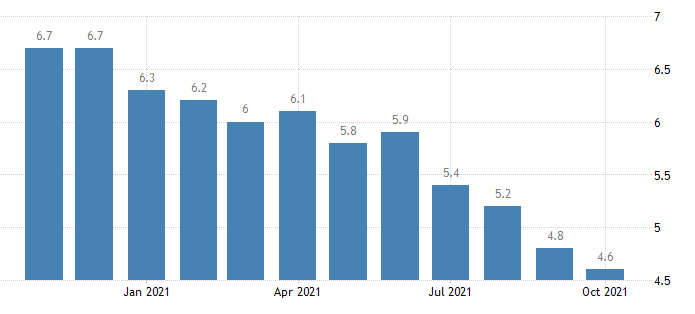Global and US Context
As a global economic and social issue, unemployment is a major concern. It happens every now and then in every country, including the US, that there aren’t enough job openings to go around. The unemployment rate constantly fluctuates because of the wide range of social and economic factors that influence it. Economic downturns cost more than 200 million people their jobs around the world. Many countries have high unemployment rates during recessions, according to researchers. Similar events occurred in 2011 in the US.
Unemployment is a state of being unemployed but actively looking for work. The standard unemployment rate in the US, U-3, is frequently cited. In order to be considered unemployed, a person must be actively searching for work and willing to accept a job offer. Temporarily laid-off workers are included in the unemployed category. A more accurate rate of unemployment rate in the US is U-6, which includes not only those who are unemployed according to the U-3 standard but also those who are only part-time workers for financial reasons (i.e., those who want a full-time job but can find only a part-time job). People who are employed, marginally attached, or underemployed are included in U-6 because the total number of people in those groups divides by the number of people in the labor force. It’s no surprise that the real rate is higher than the standard rate of unemployment in the US. Those unemployed after studies are completed are most affected, according to studies. The US unemployment rate is calculated as a percentage by dividing the number of unemployed by the number of people in the workforce (employed or unemployed) and multiplying the result by 100.
Reasons for Unemployment in the US

People who are unable to find work may have increased as a result of the current global economic situation. A financial crisis is one of the main causes of high unemployment in the US. As a result of the recession, many businesses have gone bankrupt.
Another factor contributing to unemployment is “the US government’s neoliberal policies.” Unemployment rates have risen in recent years as a result of government policies, which could be argued to be the main cause of these financial difficulties. Neoliberalism’s primary objective is to create “asset bubbles.” Regardless of good intentions, the creation of ‘bubbles’ results in structural unemployment, and their destruction results in the global financial crisis.
The ratio of imports to exports also plays a role in the unemployment rates. In the US, imports outnumber exports by a wide margin. Because of this, the US economy is imbalanced, and the external debt and unemployment rates rise.
It’s difficult to understate the importance of any of these elements to the US economy. However, the correlation between these phenomena shows that combining all of them dramatically increases unemployment. Combining factors helps understand the current US scenario.
COVID-19 impact on Unemployment in the US
All countries, not just the US, have been affected by COVID-19’s economic calamity. Unemployment in the US has increased as a result of the COVID 19 pandemics.

Source: TRADINGECONOMICS.COM – US BUREAU OF LABOR STATISTICS
As shown by the above figure, the unemployment rate in the US has risen dramatically in recent months. This increase has posed numerous problems for the US people. With such a high unemployment rate, families are left to deal with the psychological and financial consequences of unemployment. Due to unemployment, many people in the US have had to foreclose. Although the US economy has created over 7 million jobs, the economy is still a long way from recovery.
US Current Unemployment Rate
As indicated in the US Bureau of Labor Statistics, US long-term unemployment dropped to 4.6% in October 2021, the lowest level since March 2020 and a touch less than the market had projected (which was 4.7%). With a rise in demand for labor, record job openings, expiry of increased unemployment benefits, and a subsiding summer wave of COVID-19 infections, the labor market began to gradually recover from the pandemic. Employment increased by 359 thousand to 154.0 million people in October, while unemployment dropped by 255 thousand to 7.4 million. Even so, the unemployment rate remained significantly higher than the pre-crisis level of 3.5% due to constant labor shortages but is expected to decline further in the coming months as businesses fill widespread vacancies and more workers enter the labor force.
Possible Solution to the Issue
It is possible to solve a problem by providing high-quality training, introducing new jobs, and creating favorable economic and social conditions for businesses. By taking these measures, the US can alleviate the current labor market crisis and aid job seekers. The ability to prevent large levels of unemployment in the future may be accomplished by providing favorable business growth and sustainability conditions to enhance the political and economic structures of the US; these changes will have a good influence on the country’s international standing. Advancements and innovations will also ensure that there is no repeat of this type of problem in the near future.
The Future Direction of the US Unemployment Rate
Ultimately, it’s fair to say that the US unemployment rate is trending in the right direction. As a result of new job offers, the number of people looking for work has decreased.
Unemployment may have been caused by the government of the US economic and political policies. Unemployment may appear to have only negative consequences for society. On the other hand, unemployment has a positive effect on the proprietorship, which creates new employment opportunities. In addition, the current state of affairs is unresolved, as government policy advancements may help reduce unemployment levels in the country. The government of the US should implement stringent measures and better policies to reduce unemployment rates, which can be done by stabilizing the economy, reducing taxes on businesses, and creating a business-friendly environment.




